https://mil.news.sina.com.cn/china/2020-03-16/doc-iimxxstf9337779.shtml
长征2号疑似搭载"航天飞机"即将发射 会超越美X37吗
2020年03月16日 09:14 观察者网
0
[文/观察者网专栏作者 席亚洲]
由于视频时间有限,“亚洲特快”视频专栏中,显然有很多话讲不清楚,那么在这里列车长将利用文字稿方式把问题进一步说明白,也欢迎各位读者在这里继续互动。
最近,我国又一次重要的航天试射准备工作进入了紧锣密鼓阶段,长征2号F火箭即将从之前进行过多次载人航天发射的酒泉卫星发射中心航天工位发射升空,据此前相关官方公众号发布的消息称, 这是长征2号F火箭“继‘神州11号’之后,时隔三年首次执行载人航天之外的重大科研实验任务,是保证后续载人航天工程顺利实施的基础,对未来空天技术的发展非常重要”。
虽然报道内容语焉不详,但是使用我国载人航天的专用“坐骑”升空的航天器,其身份肯定是相当不凡了。
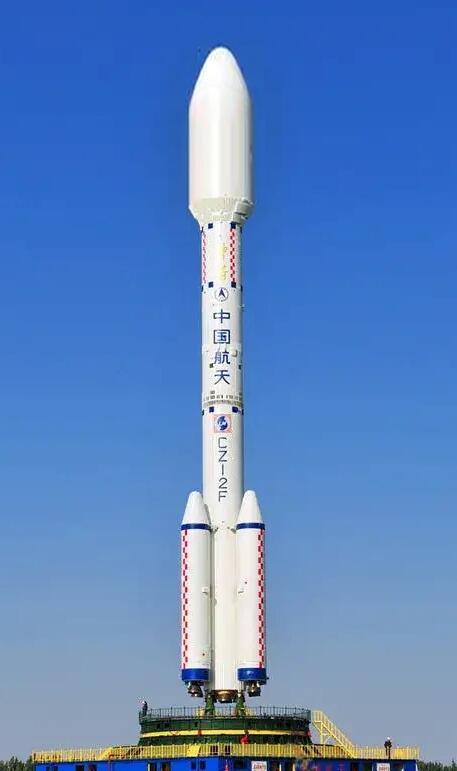
当然这张长2F携带5米直径整流罩的图片是PS的作品
另有一些说法称,这次试射的长征2号F火箭使用了5米直径的大型整流罩——这个消息列车长也没有办法进行核实。暂且假设确实如此,那么这次试射的可能是一种尺寸超出常规的飞行器。长征2号火箭的近地轨道有效载荷为8600千克,它之前发射的天宫1号轨道对接目标飞行器的最大直径也只有3.35米。
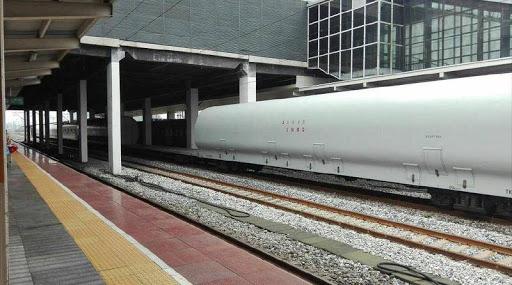
铁路运输的火箭箭体最大允许直径就是3.35米
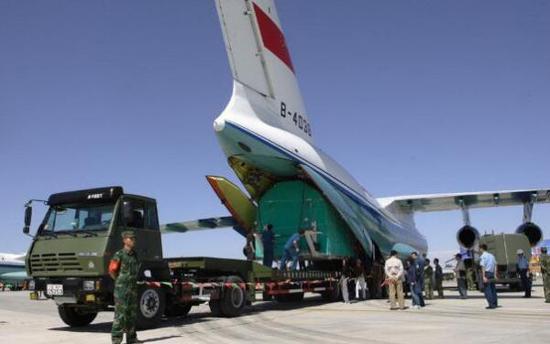
天宫目标飞行器、神舟飞船则是使用伊尔-76飞机运入,它的货舱尺寸也无法容纳5米直径的物体
而酒泉发射中心的另一个限制条件是,从这里发射的航天器需要经过铁路运入,而铁路隧道允许的最大直径就是3.35米,从这一点来看,这次发射的载荷不大可能是占满整个整流罩内部空间的圆筒形物体。
从这一点来看,有不少网友推测的,这次我们要发射的或许是类似美国X-37的小型航天飞机的说法就有相当的可能性了——之前我们看到解放军参加国庆阅兵的无侦8高速侦察机,在预演的时候就是以拆卸机翼的方式通过天安门广场的。
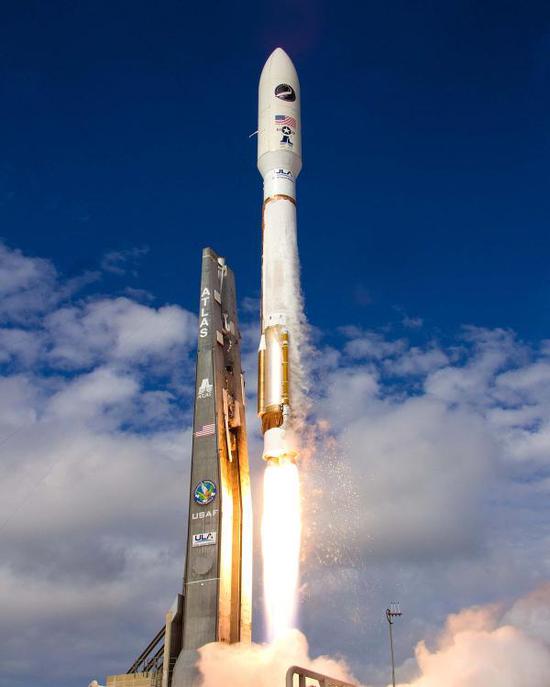
从图片来看,这次长-2F如果真的使用一个5米整流罩,就和美国空军用“阿特拉斯V”火箭发射X-37B的构型相当相似了
当然了,这次试射的到底是不是自从当年在某省电视台新闻节目中惊鸿一现的“神龙”空天飞机的后续发展型,我们现在也只能做这样还不够稳的猜测。
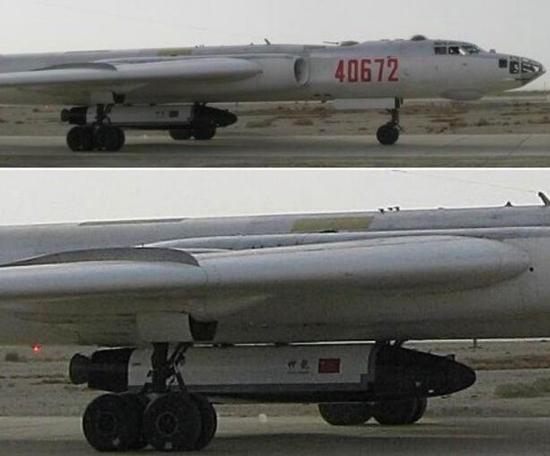
当年惊鸿一现的“神龙”验证机
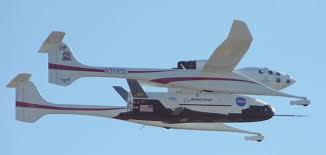
当年X-37还叫X-40的时候,也是用“白色骑士”飞机带着上天进行自由飞试验的
但是这里我们不妨将它和美国空军的“神秘明星”X-37B比较,来分析一下我们的“神龙”会具备什么新的能力。
要说X-37呢就得先说航天飞机,美国在登月竞赛中胜利后呢,开始反思投入巨额资金进行载人航天工程的实际收益,发现除了鼓舞士气、科学探索、带动各种技术发展之外,这一项目的“直接收益”并不大。在对月球进行“可持续开发”之前,人类还是得先扩展在近地轨道活动的能力,尤其是要降低向轨道上发射东西的成本。
由此美苏两国开始了新一轮的竞赛,苏联集中力量搞空间站;美国集中力量搞航天飞机——而航天飞机研制的目的,某种程度上说,是以更低的成本建造空间站。
换句话来说美国的目标不仅仅是搞个空间站,而且还考虑了以更低的成本,更快的速度,来建设和维护空间站。这就和美国登月先搞土星五号的F-1巨型火箭发动机,而苏联则着力于用几十个现有发动机凑一个N-1火箭一样,美国的计划更“高瞻远瞩”,当然也更昂贵,需要更长的项目周期。
结果呢大家都知道,冷战一结束,这些原本为了和苏联较劲而上马的远景规划,都尘归尘土归土。
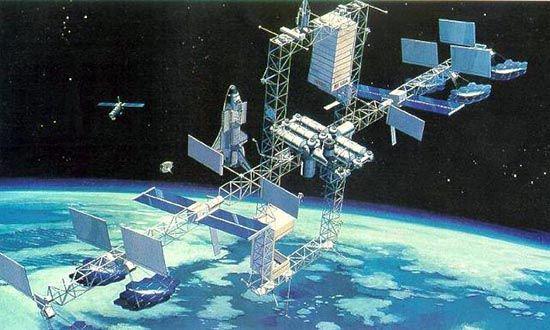
当年计划中的“自由号”空间站不仅比现在的国际空间站更大更重,而且还不止一个
而航天飞机更是因为飞行成本反而比一次性火箭还高——据NASA的口径,航天飞机每次飞行的成本是4亿美元。而现在一次性的商业运载火箭,一次飞行也就一亿美元,要是可复用的猎鹰9号这类成本可以更低了。
而航天飞机之所以飞行成本降不下来,很大程度上是因为——它太大了。
同时呢,航天飞机相对于其他航天手段还有几个无法取代的好处,第一还是成本,理论上如果航天飞机的技术继续发展下去,它的飞行成本还是可以继续降低的,毕竟它本来就是可重复使用的飞行器。第二是它可以把太空上的东西完整带回地面,因为它有个货仓,可以保护其中的货物不在再入过程中被烧蚀破坏,也不承受很大的过载。第三是它的起飞和降落过程动作相对缓和,没有受过专业宇航员训练的人也能乘坐它上太空。
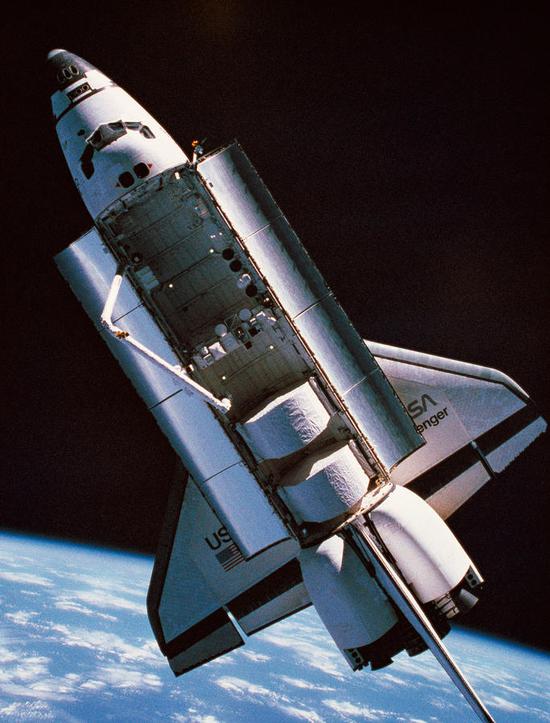
航天飞机的货舱是其他太空运输方式无法取代的优势,因为它不仅能把载荷送入太空,也能把太空中的物体带回地面
针对这三个无法取代的优势和一个坏处——在美国NASA的大型航天飞机发展走入死胡同的同时,新一代航天飞机的设计方案也就应运而生,而且还不止一个两个。实际上呢,这就像是一个超级综合性大企业解散,下面各个子公司纷纷自谋生路一样,这些“子公司”当然不会再保持“大而全”的经营方向,而是要强调各自的优势了。
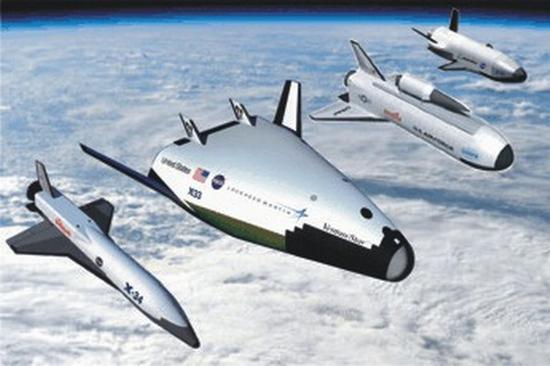
美国在航天飞机之后提出的一系列小型——或者超先进放大强化版(中间这个X-33)航天飞机设计方案当然最后只有最“挫”的X-37真正投入了实用
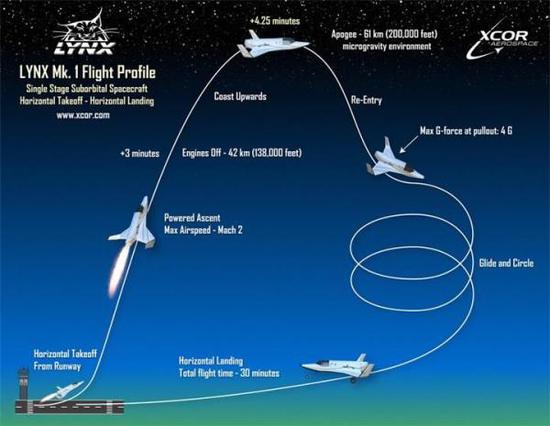
当然还有一系列为太空旅行设计的廉价“航天飞机”方案,这就没啥实用价值了
在21世纪出现的一系列小型航天飞机方案中,有用来进行太空旅游的超廉价部分轨道飞行方案,有探索验证新一代技术的,也有……用于军事用途的。
X-37就是这个侧重于军事用途的分支——它的思路是这样,航天飞机的主要问题是太大了,那么我们就要缩小,而航天飞机要缩小最大的问题在于哪里呢?在于里面要坐7个人啊——于是,波音公司表示,我越是研究越发现,人类的能力是有极限的,所以,X-37,我不坐人啦!
2005年它X-37A进行了从“白色骑士”高空试验机上投掷下来,进行了无动力自主着陆的试验,验证了它这一对小小的机翼,V型的尾翼和面包车一样的机体的气动布局能够在大气层内进行稳定的滑翔飞行。2010年,X-37B进行了首次太空飞行,之后到今天,它又进行了五次飞行,最近的这次飞行呢,持续了700多天,验证了它长期在轨作业的能力。
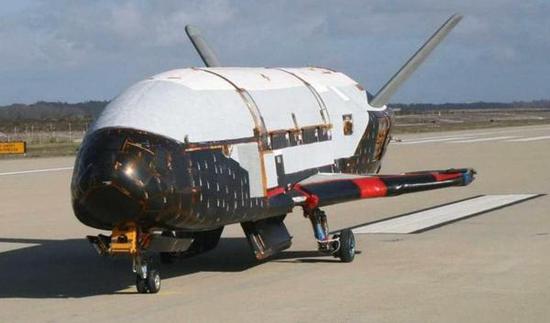
返回地面的X-37B
不过虽然X-37作为美国空军唯一的航天飞机验证机呢,它的任务其实也不是单一的,其实还是一个“小而全”的东西。
尽管它只有3.5吨的空重,但仍有一个可携带4.5吨载荷的货舱,尺寸大概相当于一辆皮卡车的货斗。在它的5次试验飞行中,都携带了保密的载荷,目前公开的只有最近一次飞行中携带的载荷,据称是用于测试热管散热系统的试验装置。此外它的货舱门里面还有一具紧贴着舱门的太阳能电池板,进入轨道以后就可以伸出来展开,这也是X-37能够长期在轨运行的电源。
但这些都其实不是什么特别的东西,实际上X-37B在太空运行的时候呢还是很容易被监控到的,因为它并没有采用隐身设计啊这类的,实际上全球有不少航天爱好者都在追踪它,更别说各国的军事和航天单位了。
X-37B的货舱里还有一具机械手——而且因为它机内也有较多的燃料,航空煤油和液氧,因此以常规方式进行轨道机动的能力也比一般的卫星要强一些,所以它也能够进行有限的变轨和靠近其他卫星的机动。
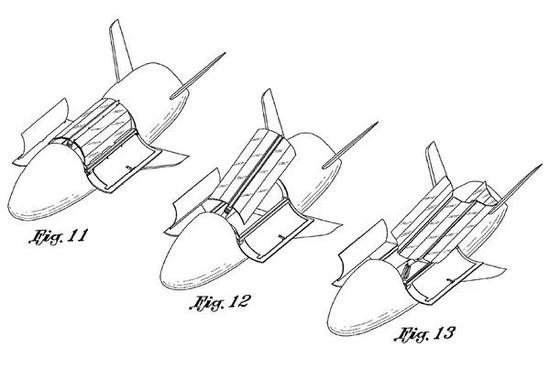
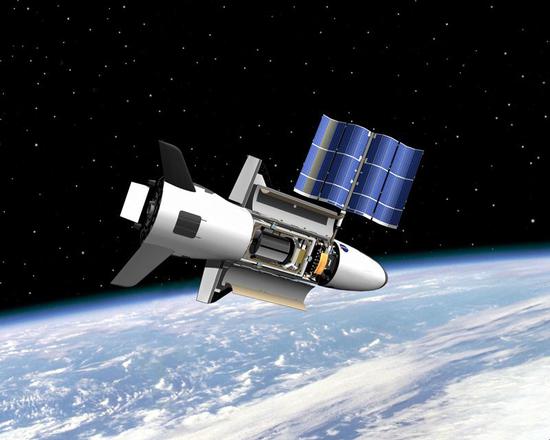
X-37B的太阳能电池板收房方式颇为有趣,不会占用货舱内空间又尽可能扩大了电池板面积
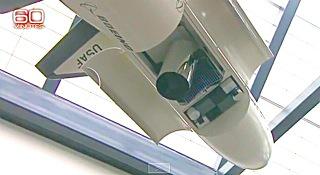
美国电视新闻中惊现一瞥的X-37B模型,货舱内有一具大直径的光学镜头
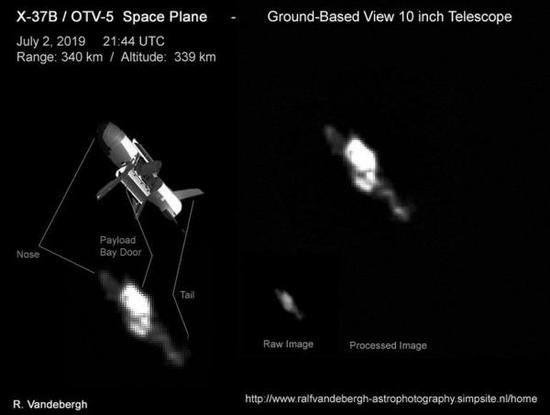
在第五次飞行中天文望远镜拍摄到的X-37B在轨释放卫星的画面(根据模糊的画面进分析和建模复原)
不过,如果仅是这些,那么其实没有超出航天飞机当年具备的能力,在波音研制X-37的时候,有一些人曾经提到,他们想在该机上验证的新技术具备革命意义的“空气动力辅助变轨”或者叫“轨道飞机”。
这听起来就很魔性,那这事儿咱们还是得说,玩过坎巴拉的各位一定都知道,改变轨道需要消耗燃料——因为牛顿他老人家说了,一个物体在不受外力的情况下,会保持其运动状态不变,而改变其运动状态就需要施加一个外力,而对于轨道飞行器来说,在大气层外飞行只受到万有引力的影响,那么要改变轨道,就要用火箭给自己施加一个力才行了。
但是,它的想法就很邪道,先降低高度到大气高层,然后用自己的机翼和控制面板产生的空气动力来改变自己的飞行方向,借助大气层“借力打力”,来实现变轨。当然了,这个过程中因为和大气摩擦,会降低飞行速度,速度降低到一定程度呢,就无法重新回到轨道上去,只能再入大气了,这个时候,就需要用火箭发动机来维持速度了。这种变轨方式最牛的一点在于,它可以消耗很少的燃料实现轨道平面变轨,用我们都能理解的话说,就是实现急剧的左右转弯,而不仅是抬升和降低轨道高度。
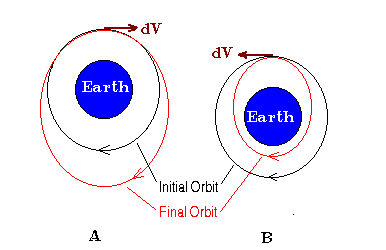
坎巴拉玩家都熟悉的变轨,在近地点加速或减速来抬升或降低远地点高度,同样,在远地点加速或减速也可以抬升和降低近地点高度
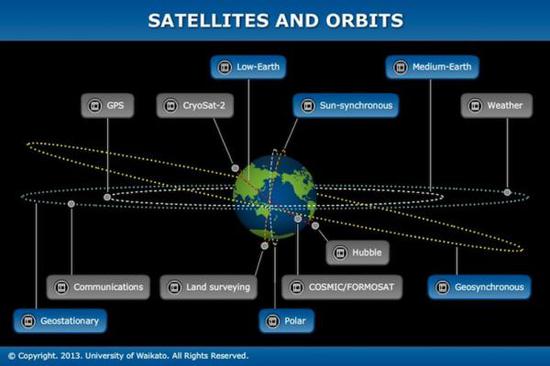
现实中,卫星除了受到地心引力的影响还受到太阳引力的影响,因此还有太阳同步轨道它可以让卫星飞过地球表面所有点的上空,是侦察卫星常用轨道,图中也可以看到不同的轨道倾角有不同的用途,如果要改变这个参数,消耗的燃料就非常多了
整个“气动变轨”过程呢,其实是一个“在作死边缘反复试探”的过程,如果处理不好,维持速度消耗的燃料太多,就得不偿失了——但是按照理论计算,如果飞行器气动布局设计合理,可以只消耗百分之零点五的燃料实现变轨,百分之零点五啊!这就非常诱人了是不是?
换句话来说,如果这个技术实现,那么你就等于获得了一架能够在一次飞行中反复进行变轨,在别人意想不到的时间飞到预定目标上空的太空侦察机,或者在紧急时刻随时可以变轨过来的通信卫星,或者能够多次改变轨道,接近不同卫星目标的“太空战斗机”,总之,你想怎么玩都行!这军事潜力就非常巨大了。甚至NASA还构想过,如果有这种飞行器,就可以在宇宙飞船,空间站出意外无法返回地球的时候,迅速救援宇航员。
但是实际X-37B有没有这个能力呢?
前面咱们提到,就是因为X-37的军事潜力巨大,它一发射就吸引了全球的目光,不仅各国军方紧盯着它,民间的航天爱好者也各显神通在盯着它看,就等着它轨道平面突然发生大幅度变化的惊人一幕,这是它具备前面我们提到“轨道飞机”能力的标志。
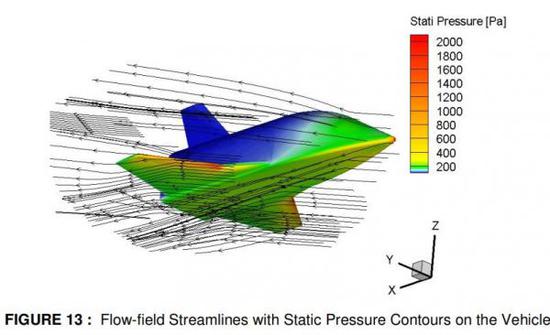
气动辅助变轨就涉及到要在大气上层进行一段高超滑翔,这个过程中要承受高温高压的考验,而且还不能掉太多速度,否则消耗燃料太多就得不偿失了
但是呢……以列车长查到的信息来看,至少到2015年,我国的航天机构主要研究所的论文都表示,没有监控到这方面的尝试,而国外的航天爱好者们的跟踪记录结果也支持了这一结论。不过在最后两次飞行,也就是2016年到2017年,和2018年到2019年的这两次飞行中,有一些迹象显示出来了。
根据美国航天爱好者的监控结果,X-37B在2016年底左右,其轨道倾角出现了一次较大幅度变动。而其近地点和远地点高度,在这两次飞行中也有了几次反复的较大幅度的变动。

X-37第四次飞行中轨道倾角发生了一次变化
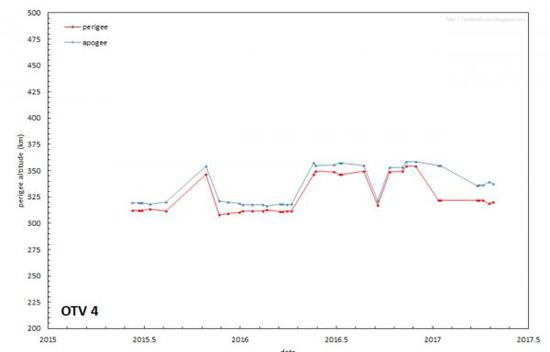
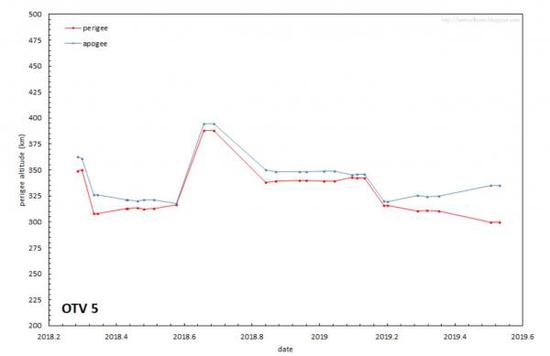
第四、第五次飞行中近地点和远地点高度也有多次的调整
不过,这些变动的幅度和频繁程度,都没有超出正常使用机上燃料进行常规变轨能够做到的水平。尤其是它的近地点高度也始终没有降低到大气边缘的水平,始终都在300公里以上。而衡量“轨道飞机”最根本的一点,就是轨道平面变轨的能力,也并没有显示出来。
据此,我们似乎可以认为,X-37B最近两次飞行中的测试,虽然比一般的正常运转的在轨卫星要频繁,但是其目的可能是为了在不同高度、重力和过载环境下对机上搭载的试验设备进行测试,而不是进行“气动辅助变轨”试验。
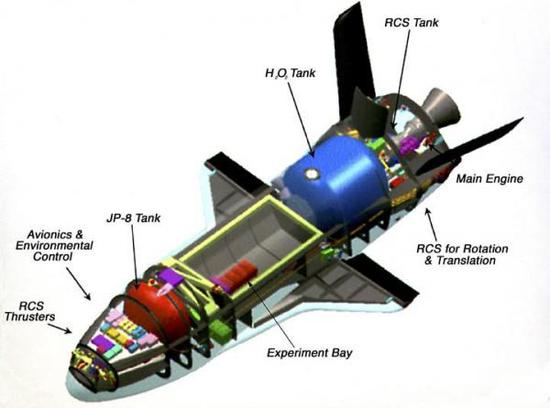
X-37B的机内带有较多的燃料和氧化剂(航空煤油和过氧化氢)常规变轨能力也要比一般的卫星强
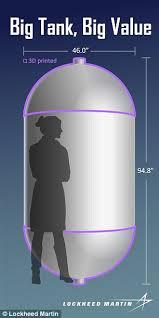
洛克希德为卫星研制的大型燃料储箱,X-37B的燃料储箱应该比它还要大一些
长期关注X-37的学术机构也支持这个观点,一位知名的航天博主的观点是这样说的:“现有的五次X-37B 轨道测试飞行任务中没有证据表明它具备轨道飞机应有的机动特性”,
那为什么X-37B没有这个能力呢,其实美国空军部长佩顿早在该机2010年试飞的时候就曾表示,由于X-37B结构重量仍然过高,不能成为真正的“轨道飞机”,那么现在来看,他说的可能并没有错,也许X-37研制阶段,波音和空军曾经期望让它具备“轨道飞机”的特性,但实际上最后造出来的X-37B,可能真的不具备这个能力。
至于这个结构超重的主要原因——很可能是因为它的设计功能还是多了……你看它又有货仓,又有长期在轨工作所需的大型太阳能电池板,又有机械臂……实际上就是航天飞机的小型化版本,或者说,跳出了“大而全”的坑,马上又掉进了“小而全”的坑里面。
这样做的结果,是美国空军获得了一个能够将在轨测试的卫星零部件安全带回地面的技术手段——这也是我们前面提到的,航天飞机的三大好处之一。
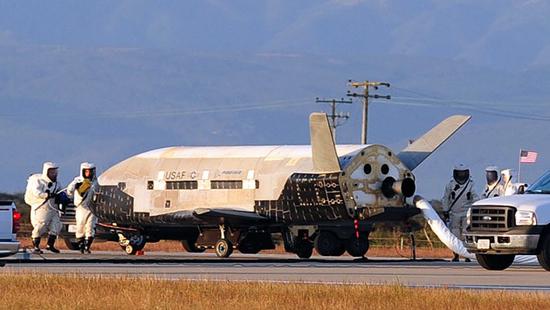
X-37B能将轨道上的物体安全带回地面,这是该机的独特价值
但坏处就是,它设计之初希望验证的,最核心的“轨道飞机”的完整能力也就没有了。
不过话又说回来,X-37B在完成卫星发射任务后,还是有可能进行一些与“轨道飞机”关键设计参数有关的飞行试验的,比如在大气上层打个水漂什么的,它还是有可能的。
这可以为将来设计真正的轨道飞机奠定一点基础——不过这个试验的能力肯定也是很有限的,这毕竟是在作死边缘反复试探的过程。
“轨道飞机”的能力其实是有一点专业水平的媒体才能注意到的事情了,而关于X-37B,媒体上经常出现的另一个说法是它是“一小时打遍全球”的“超级武器”——2015年之前,这个技术是“只有美国才有可能做到的超先进技术”,“独步全球,外星黑科技”!
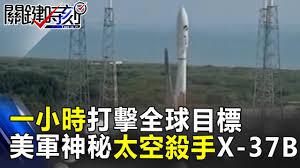
……就是这种啦……
2015年中国首次进行高超声速试飞后这就是……“呸,不值钱的落后技术”了……一大票连亚音速飞机都做不好的国家和地区也纷纷跳着脚喊:“中国能, 我也能!”“我PPT都画好啦!”……
我们知道,当年的航天飞机和X-37B一样,在再入大气的时候都会有一段从第一宇宙速度,也就是大约23马赫以上的速度降低下来,到着陆前降低到一两百公里/小时的过程。
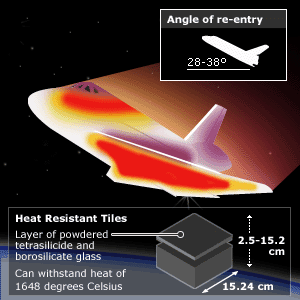
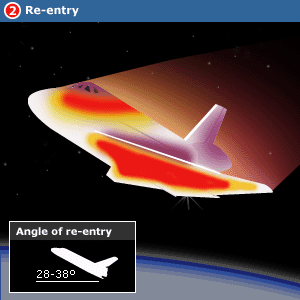
航天飞机和X-37的热防护技术处于同一水平线,在再入过程中需要进行反复调整迎角以免烧毁
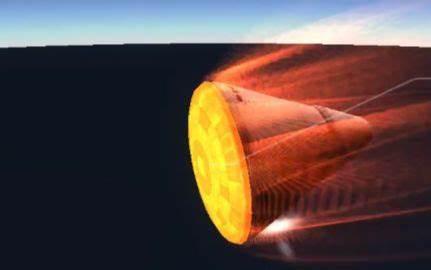
这又是坎巴拉航天局的主任们的奇怪知识呢……再入的时候看着过热的进度条调整迎角以免局部过热烧炸什么的……现实中你没法给飞船装两层防热大底不是?
这个过程的前半段,就必须利用高超声速滑翔——不过,与现在的高超声速武器不一样,航天飞机和X-37B的设计上都要尽快降低自己的速度,因为它们的防热系统并不能长时间的耐受两千多度的高温,所以实际上它的滑翔过程实际上是一直在调整机身相对于气流的角度,温度高了,放低一些机头,减速就会慢一些,但温度相对低一些,等温度低了就拉起机头,减速会更快,但温度也会急剧上升。这样来回反复,让机体的热护盾在过热的边缘反复试探……最后速度高度终于降低到合适的程度,也就正好到了肯尼迪航天中心跑道上空,可以开始着陆了。
所以我们看到X-37B和航天飞机都是“钝头”设计,这就是为了避免机身前缘温度过高的设计,按这样的设计显然阻力会更大。
而相比之下,高超声速滑翔原理的导弹就是以尽可能维持更长的滑翔距离,全程尽可能提高维持的速度,因此要求它的“升阻比”要尽可能大——所以先进的高超声速滑翔体前面得是“尖”的。
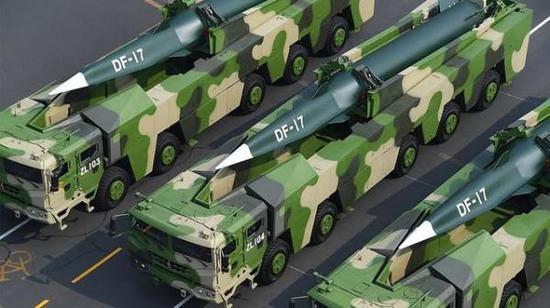
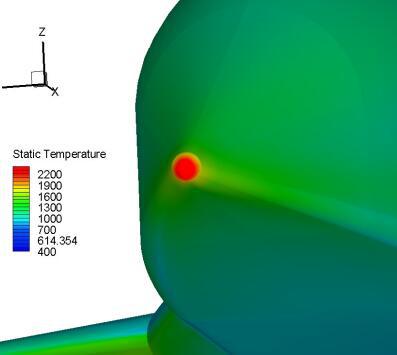
把飞行器前缘做成尖锐型的问题在于,温度会在尖端的地方特别高,这就需要采用更加先进的防热材料
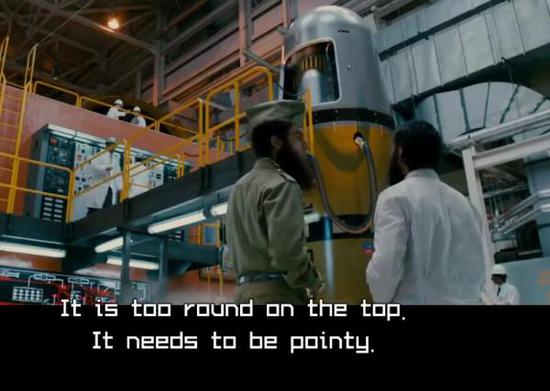
2012年美国喜剧电影《独裁者》中,曾拿导弹的头是尖的还是圆的作为一个笑点……沙雕独裁者:为什么这个导弹的头是圆的?我看那些牛X国家的导弹都是尖的啊!
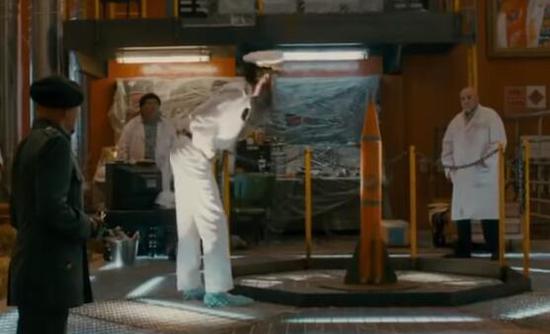
在因此赶走了主持导弹研制的科学家后……就只能做出这种“尖”的导弹了……
从这个角度来看,X-37B和航天飞机,都远不是合适的“高超声速滑翔导弹”的构型,因为它在靠近目标的时候速度急速下降,而且机动性能也不强,很容易被击落。
苏联当年对于航天飞机被当做武器使用的担心,主要是认为它如果只进行高空高超声速滑翔,不降低到地面高度,而是直接在莫斯科上空高空引爆巨型核弹,这就很难拦截了,这种高空核爆产生的电磁脉冲可以瘫痪苏联的通信指挥系统。X-37B理论上当然也可以这么用——只是这种末日武器的玩法,几乎不具备实战意义啊。
当然这里不是说X-37B不是一种先进的轨道飞行器,只不过它和我们的高超声速导弹走的是两条技术路线。
拿汽车打个比方,航天飞机好比美国大皮卡,能拉货,能坐人,油耗高,价格贵,而X-37B则是特斯拉新出的那个电动小皮卡,虽然比较特别,但基本说并未脱出皮卡的框架,至于现在的高超声速导弹,其实都是法拉利、保时捷、兰博基尼这类的超级跑车,跟皮卡已经根本不是一个类型的,那它们做对比其实已经没有太大的意义。
正是因为航天飞机和高超飞行器其实是两个概念,前面咱们提到的航天飞机的几个优势,对于航天应用来说,仍然是成立的,它仍然是未来载人航天中重要的一个技术路径,作为一个大国,我们当然也要探索——况且,还有军事潜力巨大的“轨道飞机”的技术路线可以探索呢?
目前来看,我们已经知道,我国在高超声速技术方面,尤其是热防护技术等领域相对美国已经取得了一定的优势——那么问题来了……我们的“神龙”会不会对“轨道飞机”技术发起挑战呢?
我们知道,“轨道飞机”需要什么,轨道飞机需要的是在大气层内具备很高升阻比,因为有更大的升力,才能更快更大幅度的进行机动,而更小的阻力,可以减少速度损失,也就相应的减少燃料消耗。而这其实就和高超声速滑翔飞行器的要求有重合之处。当然更不用提,如果已经进行过洲际速域的高超声速全程试飞,和频繁的高超声速风洞吹风,那么对于高空大气的空气动力学特征,热力学特征也会有更多的认识,有利于设计出更加复杂和高效的气动外形。而在耐高温材料方面的技术优势,则可以降低采用更高效气动外形方面的限制条件。
这几点加在一起,如果我们的小型航天飞机具备完全超越X-37的性能,并不值得奇怪,甚至我们完全可能比美国更领先的实现“轨道飞机”的概念——如果我们的航天飞机采用更加轻巧的设计的话。
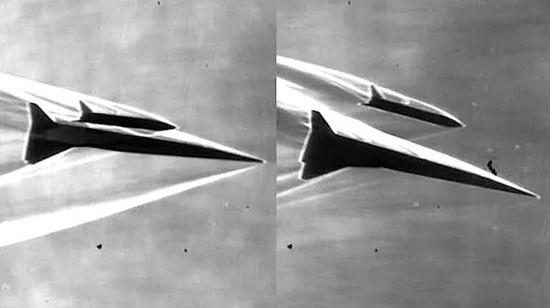
中国还是在认认真真踏踏实实,一步一个脚印的向着自己的目标接近的,第一次试射的小航天飞机到底是什么性能,其实也并不是最重要的问题
当然,毕竟这是我们第一次研制的小型航天飞机,未必直接挑战“轨道飞机”技术,而此前“神龙”的设计看起来也还是比较传统的外形,包括“钝头”的设计,它可能主要还是验证航天飞机的基本技术,出于一步一个脚印的稳妥的考虑,这也是没有什么问题的。
之前俄罗斯、印度、欧洲航天局和日本也在进行小型航天飞机的相关研究和试验,这里面俄罗斯水平当然是最高的了,他们在冷战结束前就已经开发出了与美国航天飞机非常接近的“暴风雪”号验证机并且在无人状态下进行了试飞,21世纪以来俄罗斯也有多个航天飞机发展方案,其技术水平是不必怀疑的,但……所谓一分钱难死英雄汉,也就不必多说了。
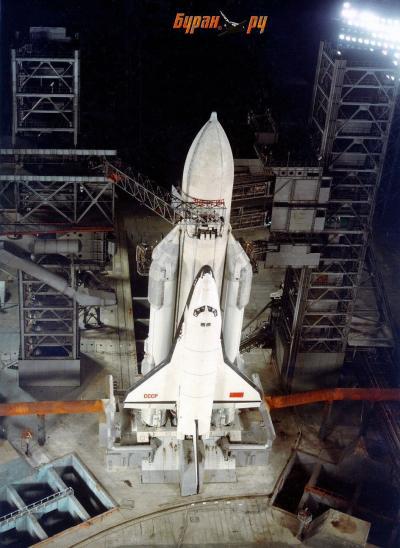
当年俄罗斯的“暴风雪”号航天飞机几乎和美国航天飞机已经差不多了
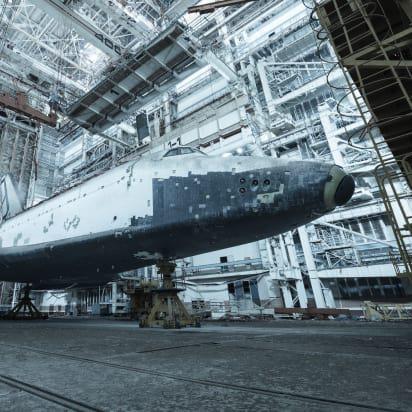
但现在它只能……唉
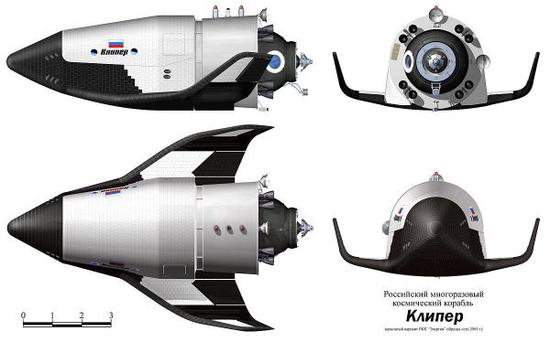
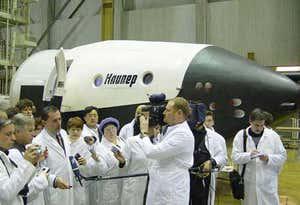
小型航天飞机的计划也是有的,但没有钱,就没办法试飞咯
2015年,欧空局发射了IXV小型航天飞机验证机,不过该机在最后着陆阶段并不是在机场着陆,而是打开降落伞落到海上。但它至少是真正的上了轨道,验证了完整的从轨道再入大气层的能力,后续欧空局计划发展类似X-37的新型航天飞机,不过目前尚未进行发射。
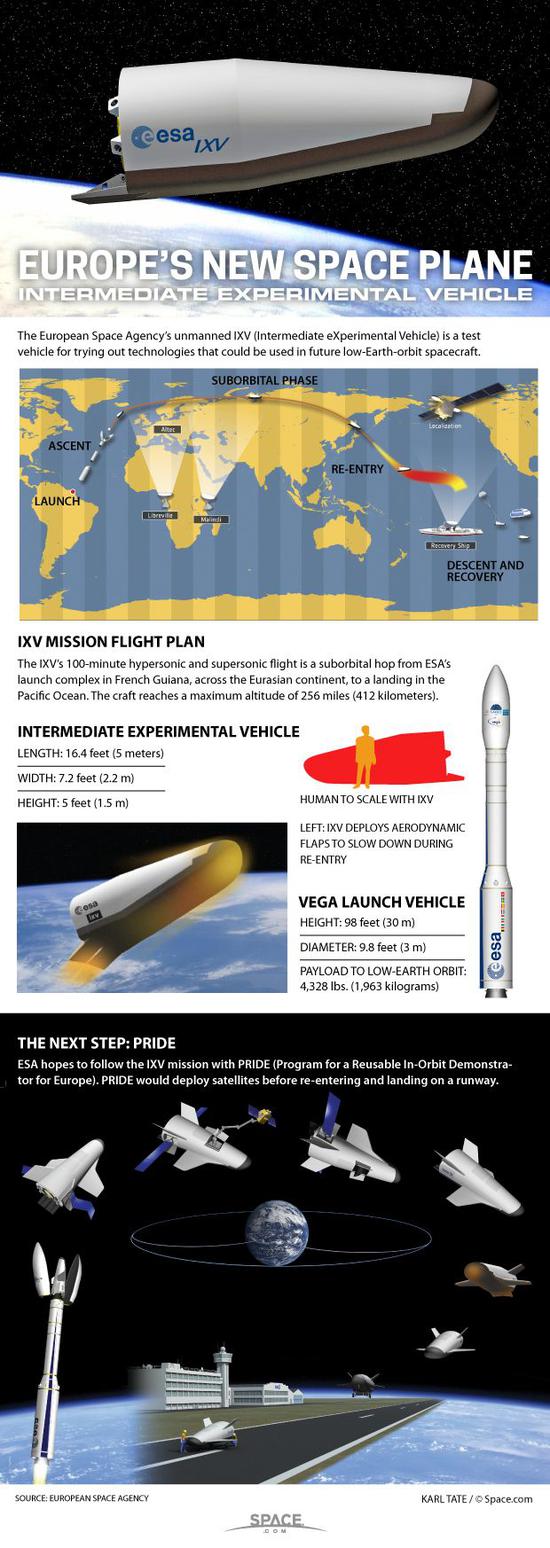
欧空局的计划也定好了,下一步就是类似X-37B的能长期在轨活动的小航天飞机
而印度的RLV-TD看起来外形好像像那么回事,但该它的飞行高度、速度都远达不到航天飞机所需要的水平,最后也没有回收,而是一头扎入孟加拉湾解体沉没。其实到底验证了什么谁也不知道……
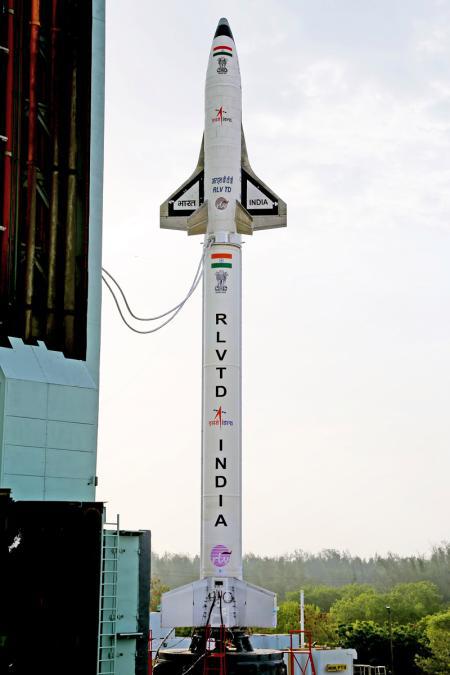
印度“航天飞机”试飞高度只有65公里,没出大气层,最大速度接近5马赫,试验到最后,飞行器一头扎进孟加拉湾,也不打算回收……这到底是验证了什么就不知道了
而日本呢,虽然从80年代他们就制定了研制航天飞机的计划,其计划使用H-2火箭发射的“希望-X”航天飞机也认认真真的进行了研制,并且已经造出了验证机,制定了2004年试飞的计划——但是最后计划还是不了了之。当然最近随着高超声速技术的热门,日本有开始要追赶这个热点,据称近期他们进行了旨在研制“极音速滑走弹”(高超声速滑翔)的相关试飞,不过看他们的相关投资金额和重视程度,实在也很让人怀疑就是了。
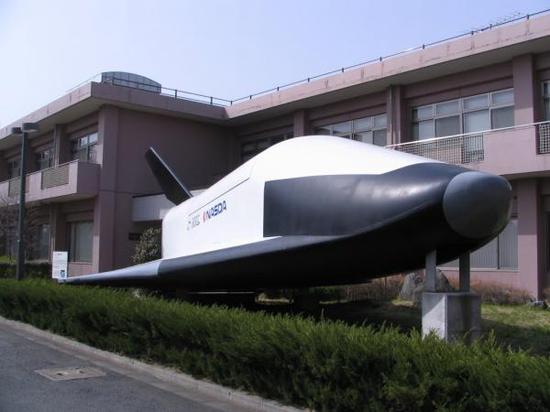
日本HOPE-X当初也是认真搞了的, 这个1:1结构强度验证机至今还在JAXA的院里当雕塑……
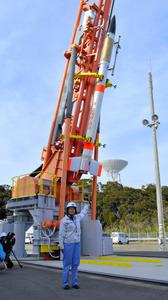
相比当年雄心壮志,如今进行“极音速滑走弹”试飞的运输工具实在是有点……
这一圈看下来,目前中国和美国大概是仅有的既有雄心壮志,又有经济和科技实力向星辰大海进军的国家了。上一次“大国竞争”让美国人登上了月球,苏联人造出了空间站,美国造出了航天飞机——那么未来20年,新一轮“大国竞争”将会创造出什么奇迹呢,我们拭目以待吧。
关键字 : 航天飞机长征2号
Long March 2 suspected of being launched with "space shuttle", will it surpass the US X37?
March 16, 2020 09:14 Observer Network
0
[Writer / Observer Network Columnist Xi Asia]
Because of the limited time of the video, there are obviously many words in the "Asian Express" video column, so the train captain will use the text draft method to further explain the problem, and readers are welcome to continue to interact here.
Recently, another important space test preparation for China has entered into the intensive stage. The Long March 2F rocket is about to be launched from the space station of Jiuquan Satellite Launch Center, which has carried out many manned space launches. According to the previous official public, According to the news released by the No.2, this is the Long March 2 F rocket "after the" Shenzhou 11 ", for the first time in three years to perform major scientific research and experimental tasks other than human spaceflight, is the basis for ensuring the smooth implementation of subsequent manned spaceflight projects It is very important for the development of future aerospace technology. "
Although the content of the report is unknown, the identity of a spacecraft that has been lifted off by a dedicated "mountain" for manned spaceflight in China must be quite extraordinary.
Of course this picture of a 2F long 5m diameter fairing is a work by PS
Some other claims said that the Long March 2F rocket used for the test firing used a large 5-meter-diameter fairing-the news that the train captain could not verify it. For the time being, assuming this is the case, the test shot may be an aircraft that is larger than normal. The long-range orbit payload of the Long March 2 rocket is 8,600 kilograms. The maximum diameter of the Tiangong 1 orbiting target aircraft launched previously was only 3.35 meters.
最大 The maximum allowable diameter of the rocket arrow body for railway transportation is 3.35 meters
The target aircraft and Shenzhou spacecraft of the Tiantian Palace were imported using the Il-76 aircraft, and its cargo compartment size could not accommodate objects with a diameter of 5 meters.
Another limitation of the Jiuquan launch center is that the spacecraft launched from here needs to be transported by rail, and the maximum diameter of the railway tunnel is 3.35 meters. From this point of view, the load of this launch is unlikely to account for A cylindrical object that fills the entire interior space of the fairing.
From this point of view, many netizens have speculated that this time we may launch a small space shuttle similar to the US X-37. It is quite possible to say that before we saw the PLA participating in the National Day parade. No reconnaissance 8 high-speed reconnaissance aircraft passed the Tiananmen Square by dismantling the wings during the rehearsal.
From the pictures, if the 5-2 fairing is really used for the Long-2F, the configuration of the US Air Force using the Atlas V rocket to launch the X-37B is quite similar.
Of course, whether this test shot was a follow-up development model of the "Shenlong" aerospace plane that had been shocked in the news program of a certain provincial TV station that year, we can only make such a guess that is not stable enough.
神 The "Shenlong" Verification Machine
When X-37 was also called X-40, it also used the "White Knight" aircraft to carry out free flight tests with the sky.
But here we might as well compare it with the US Air Force's "Mysterious Star" X-37B to analyze what new capabilities our "Shenlong" will have.
If you want to say X-37, you must first talk about the space shuttle. After the United States won the moon landing competition, it began to reflect on the actual benefits of investing a huge amount of money in manned space projects. Besides, the "direct benefits" of this project are not large. Before the "sustainable development" of the moon, human beings still have to expand their capabilities in low-Earth orbit, especially to reduce the cost of launching things into orbit.
As a result, the United States and the Soviet Union began a new round of competition. The Soviet Union concentrated its efforts on the space station. The United States concentrated its efforts on the space shuttle. The purpose of the space shuttle development, to a certain extent, was to build the space station at a lower cost.
In other words, the goal of the United States is not only to build a space station, but also to consider building and maintaining the space station at a lower cost and faster speed. This is the same as when the U.S. first launched the Saturn V's F-1 giant rocket engine, and the Soviet Union focused on using an existing N-1 rocket with dozens of existing engines. The U.S. plan is more "forward-looking" and, of course, more Expensive and requires longer project cycles.
As a result, everyone knows that after the end of the Cold War, these long-term plans that were originally launched in order to compete with the Soviet Union were all returned to the dust.
不仅 The "Liberty" space station planned in the past was not only larger and heavier than the current International Space Station, but also more than one
What's more, the space shuttle is more expensive than a one-time rocket because of NASA's caliber. According to NASA's caliber, the space shuttle costs $ 400 million per flight. Now a one-time commercial launch vehicle costs $ 100 million per flight, and the cost of a reusable Falcon 9 would be even lower.
And the reason why the space shuttle's flight cost can't be lowered is because-it's too big.
At the same time, the space shuttle has several irreplaceable benefits compared to other space methods. The first is cost. In theory, if the technology of the space shuttle continues to develop, its flight cost can continue to be reduced. After all, it was originally Reusable aircraft. The second is that it can bring everything in space back to the ground in its entirety, because it has a cargo warehouse, which can protect the goods in it from being damaged by re-entry during the re-entry process, and it will not withstand a large overload. The third is that its movements during takeoff and landing are relatively gentle, and people who have not been trained by professional astronauts can take it to space.
The space shuttle's cargo bay is an irreplaceable advantage of other space transportation methods, because it can not only send loads into space, but also bring objects in space back to the ground.
Aiming at these three irreplaceable advantages and one disadvantage-at the same time as the development of NASA's large space shuttle entered the dead end, the design of the new generation of space shuttles came into being, and there were more than one or two. In fact, this is like the dissolution of a super-integrated large enterprise. The following subsidiaries have made their own living. Of course, these "subsidiaries" will of course not maintain the "big and comprehensive" business direction, but they must emphasize their own Advantage.
A series of small-sized or ultra-advanced zoom-enhanced versions (X-33 in the middle) proposed by the United States after the space shuttle. Of course, only the most "frustrated" X-37 was actually put into practical use.
Of course, there are a series of cheap "space shuttle" programs designed for space travel, which have no practical value.
中 Among the series of small space shuttle programs that appeared in the 21st century, there are ultra-cheap partial orbital flight solutions for space tourism, some exploring and verifying new-generation technologies, and others ... for military use.
X-37 is this branch that focuses on military use-its thinking is this way, the main problem of the space shuttle is too big, then we have to shrink, and where is the biggest problem of shrinking the shuttle? There are seven people in it. So, Boeing said that the more I study, the more I find that human capabilities have limits, so, X-37, I wo n’t sit.
In 2005, its X-37A was dropped from the "White Knight" high-altitude test aircraft and conducted an unpowered autonomous landing test, verifying its pair of small wings, V-shaped tails and van-like bodies. Aerodynamic layout enables stable gliding flight in the atmosphere. In 2010, the X-37B made its first space flight, and since then, it has carried out five more flights. The most recent flight lasted more than 700 days, verifying its ability to operate in orbit for a long time.
X-37B returning to the ground
However, although the X-37 is the only space shuttle verification aircraft of the United States Air Force, its mission is not single, but it is still a "small and complete" thing.
Although it only has an empty weight of 3.5 tons, there is still a cargo hold that can carry a 4.5-ton load, which is roughly the size of a pickup truck's bucket. In its five test flights, it carried confidential loads. Currently only the loads carried in the latest flight are disclosed. It is said to be a test device used to test the heat pipe cooling system. In addition, there is a solar panel close to the cargo door inside the cargo compartment door, which can be extended after entering the track. This is also the power source that the X-37 can run on the track for a long time.
But these are not anything special. In fact, when the X-37B is in space, it is still easy to be monitored because it does not use a stealth design. In fact, there are many aerospace enthusiasts around the world. It's tracking it, not to mention the military and space units of each country.
There is also a manipulator in the cargo compartment of the X-37B-and because it also has more fuel in it, aviation kerosene and liquid oxygen, the ability to orbit maneuver in the conventional way is also stronger than that of ordinary satellites, so it can also Perform limited orbital changes and maneuver close to other satellites.
X-37B's solar panel closing method is quite interesting, it will not occupy the space in the cargo compartment and enlarge the panel area as much as possible.
A glimpse of the X-37B model in American TV News, there is a large diameter optical lens in the cargo compartment
画面 The X-37B satellite release orbit image captured by the astronomical telescope during the fifth flight (analyzed and reconstructed based on the blurred image)
However, if it is only these, then it does not exceed the capabilities of the space shuttle. When Boeing developed the X-37, some people mentioned that the new technology they wanted to verify on the aircraft had revolutionary "aerodynamics." "Auxiliary orbital change" or "rail plane".
This sounds very magical, and we still have to say that everyone who has played in Kambara must know that changing the trajectory requires fuel--because Newton said that an object is not subject to external forces Will keep its motion state unchanged, and to change its motion state requires an external force. For an orbiting aircraft, flying outside the atmosphere is only affected by gravitation, so to change the orbit, you need to apply a rocket to yourself Just do it.
However, its idea is very evil, first lower the altitude to the upper atmosphere, and then use the aerodynamic forces generated by your own wings and control panel to change your flight direction, and use the atmosphere to "strength" to achieve orbit. Of course, because of friction with the atmosphere during this process, the flight speed will be reduced. If the speed is reduced to a certain level, it will not be able to return to orbit, and can only enter the atmosphere again. At this time, the rocket engine is required to maintain the speed. . The best part of this method is that it can consume very little fuel to achieve orbital plane change. In the words we all understand, it is to make sharp left and right turns, not only to raise and lower the track height.
Kambala players are familiar with the trajectory, accelerating or decelerating at apogee to raise or lower the altitude of the apogee. Similarly, accelerating or decelerating at apogee can also raise and lower the altitude of the apogee.
In reality, in addition to the influence of gravity, the satellite is also affected by the gravitational influence of the sun. Therefore, there is also a sun-synchronous orbit. It allows the satellite to fly over all points on the surface of the earth. It is a common orbit for reconnaissance satellites. The orbital inclination has different uses. If you change this parameter, you will consume a lot of fuel.
The entire "pneumatic orbital change" process is actually a "repeated trial and error at the edge of death." If it is not handled properly and too much fuel is consumed to maintain the speed, it will be more than worth it-but according to theoretical calculations, if the aerodynamic layout of the aircraft The design is reasonable, and it can consume only 0.5% of fuel to achieve derailment, 0.5%! This is very tempting, isn't it?
In other words, if this technology is realized, then you are equivalent to obtaining a space reconnaissance plane that can repeatedly change orbits in one flight, fly to a predetermined target at an unexpected time, or at any time in an emergency. A communication satellite that can change orbits, or a "space fighter" that can change orbits multiple times and approach different satellite targets. In short, you can play whatever you want! This military potential is huge. Even NASA has conceived that if there is such a vehicle, it can quickly rescue astronauts when a spacecraft or a space station accidentally fails to return to Earth.
But does the actual X-37B have this ability?
We mentioned earlier that it is because of the huge military potential of the X-37 that it attracted global attention as soon as it was launched. Not only did the military of all countries keep an eye on it, but civil aviation enthusiasts also stared at it. Waiting for an astonishing scene of a sudden and drastic change in its orbital plane, this is a sign that it has the ability of the "orbital plane" we mentioned earlier.
Aerodynamically assisted orbital change involves a superb glide in the upper atmosphere. In the process, it must withstand the test of high temperature and high pressure, and it must not lose too much speed, otherwise it will be worth the loss of too much fuel.
But ... based on the information found by the train conductor, at least by 2015, the papers of the main institutes of China ’s space agencies stated that no attempt was made to monitor this, and the results of tracking records of foreign space enthusiasts This conclusion is also supported. However, in the last two flights, that is, 2016 to 2017, and 2018 to 2019, there are some signs.
According to the monitoring results of American space enthusiasts, X-37B experienced a large change in its orbital inclination around the end of 2016. The altitudes of its apogee and apogee have also changed several times during these two flights.
X-37 changed its orbital inclination during the fourth flight
近 The altitudes of the apogee and apogee have also been adjusted many times during the fourth and fifth flights.
However, the magnitude and frequency of these changes have not exceeded the levels that can be achieved by using conventional fuel on board for conventional orbital changes. In particular, the height of its perigee has not been reduced to the level of the atmosphere's edge, and it has always been above 300 kilometers. And the most fundamental point of measuring "orbital aircraft" is the ability to change the orbital plane, which has not been shown.
Based on this, we seem to think that the X-37B's recent two in-flight tests, although more frequent than the normal on-orbit satellites, may be aimed at carrying the aircraft at different altitudes, gravity, and overload environments Test equipment instead of "pneumatically assisted orbital change" tests.
X-37B has more fuel and oxidizer (aviation kerosene and hydrogen peroxide) in the aircraft. The conventional orbital changing ability is also stronger than that of ordinary satellites.
Lockheed developed a large fuel storage tank for satellites. The fuel storage tank of X-37B should be larger than it.
Academics who have followed X-37 for a long time also support this view. The view of a well-known aerospace blogger said: "There is no evidence in the existing five X-37B orbital test missions that it has the orbital aircraft Mobile characteristics ",
Why does X-37B not have this ability?
长征2号疑似搭载"航天飞机"即将发射 会超越美X37吗
2020年03月16日 09:14 观察者网
0
[文/观察者网专栏作者 席亚洲]
由于视频时间有限,“亚洲特快”视频专栏中,显然有很多话讲不清楚,那么在这里列车长将利用文字稿方式把问题进一步说明白,也欢迎各位读者在这里继续互动。
最近,我国又一次重要的航天试射准备工作进入了紧锣密鼓阶段,长征2号F火箭即将从之前进行过多次载人航天发射的酒泉卫星发射中心航天工位发射升空,据此前相关官方公众号发布的消息称, 这是长征2号F火箭“继‘神州11号’之后,时隔三年首次执行载人航天之外的重大科研实验任务,是保证后续载人航天工程顺利实施的基础,对未来空天技术的发展非常重要”。
虽然报道内容语焉不详,但是使用我国载人航天的专用“坐骑”升空的航天器,其身份肯定是相当不凡了。

当然这张长2F携带5米直径整流罩的图片是PS的作品
另有一些说法称,这次试射的长征2号F火箭使用了5米直径的大型整流罩——这个消息列车长也没有办法进行核实。暂且假设确实如此,那么这次试射的可能是一种尺寸超出常规的飞行器。长征2号火箭的近地轨道有效载荷为8600千克,它之前发射的天宫1号轨道对接目标飞行器的最大直径也只有3.35米。

铁路运输的火箭箭体最大允许直径就是3.35米

天宫目标飞行器、神舟飞船则是使用伊尔-76飞机运入,它的货舱尺寸也无法容纳5米直径的物体
而酒泉发射中心的另一个限制条件是,从这里发射的航天器需要经过铁路运入,而铁路隧道允许的最大直径就是3.35米,从这一点来看,这次发射的载荷不大可能是占满整个整流罩内部空间的圆筒形物体。
从这一点来看,有不少网友推测的,这次我们要发射的或许是类似美国X-37的小型航天飞机的说法就有相当的可能性了——之前我们看到解放军参加国庆阅兵的无侦8高速侦察机,在预演的时候就是以拆卸机翼的方式通过天安门广场的。

从图片来看,这次长-2F如果真的使用一个5米整流罩,就和美国空军用“阿特拉斯V”火箭发射X-37B的构型相当相似了
当然了,这次试射的到底是不是自从当年在某省电视台新闻节目中惊鸿一现的“神龙”空天飞机的后续发展型,我们现在也只能做这样还不够稳的猜测。

当年惊鸿一现的“神龙”验证机

当年X-37还叫X-40的时候,也是用“白色骑士”飞机带着上天进行自由飞试验的
但是这里我们不妨将它和美国空军的“神秘明星”X-37B比较,来分析一下我们的“神龙”会具备什么新的能力。
要说X-37呢就得先说航天飞机,美国在登月竞赛中胜利后呢,开始反思投入巨额资金进行载人航天工程的实际收益,发现除了鼓舞士气、科学探索、带动各种技术发展之外,这一项目的“直接收益”并不大。在对月球进行“可持续开发”之前,人类还是得先扩展在近地轨道活动的能力,尤其是要降低向轨道上发射东西的成本。
由此美苏两国开始了新一轮的竞赛,苏联集中力量搞空间站;美国集中力量搞航天飞机——而航天飞机研制的目的,某种程度上说,是以更低的成本建造空间站。
换句话来说美国的目标不仅仅是搞个空间站,而且还考虑了以更低的成本,更快的速度,来建设和维护空间站。这就和美国登月先搞土星五号的F-1巨型火箭发动机,而苏联则着力于用几十个现有发动机凑一个N-1火箭一样,美国的计划更“高瞻远瞩”,当然也更昂贵,需要更长的项目周期。
结果呢大家都知道,冷战一结束,这些原本为了和苏联较劲而上马的远景规划,都尘归尘土归土。

当年计划中的“自由号”空间站不仅比现在的国际空间站更大更重,而且还不止一个
而航天飞机更是因为飞行成本反而比一次性火箭还高——据NASA的口径,航天飞机每次飞行的成本是4亿美元。而现在一次性的商业运载火箭,一次飞行也就一亿美元,要是可复用的猎鹰9号这类成本可以更低了。
而航天飞机之所以飞行成本降不下来,很大程度上是因为——它太大了。
同时呢,航天飞机相对于其他航天手段还有几个无法取代的好处,第一还是成本,理论上如果航天飞机的技术继续发展下去,它的飞行成本还是可以继续降低的,毕竟它本来就是可重复使用的飞行器。第二是它可以把太空上的东西完整带回地面,因为它有个货仓,可以保护其中的货物不在再入过程中被烧蚀破坏,也不承受很大的过载。第三是它的起飞和降落过程动作相对缓和,没有受过专业宇航员训练的人也能乘坐它上太空。

航天飞机的货舱是其他太空运输方式无法取代的优势,因为它不仅能把载荷送入太空,也能把太空中的物体带回地面
针对这三个无法取代的优势和一个坏处——在美国NASA的大型航天飞机发展走入死胡同的同时,新一代航天飞机的设计方案也就应运而生,而且还不止一个两个。实际上呢,这就像是一个超级综合性大企业解散,下面各个子公司纷纷自谋生路一样,这些“子公司”当然不会再保持“大而全”的经营方向,而是要强调各自的优势了。

美国在航天飞机之后提出的一系列小型——或者超先进放大强化版(中间这个X-33)航天飞机设计方案当然最后只有最“挫”的X-37真正投入了实用

当然还有一系列为太空旅行设计的廉价“航天飞机”方案,这就没啥实用价值了
在21世纪出现的一系列小型航天飞机方案中,有用来进行太空旅游的超廉价部分轨道飞行方案,有探索验证新一代技术的,也有……用于军事用途的。
X-37就是这个侧重于军事用途的分支——它的思路是这样,航天飞机的主要问题是太大了,那么我们就要缩小,而航天飞机要缩小最大的问题在于哪里呢?在于里面要坐7个人啊——于是,波音公司表示,我越是研究越发现,人类的能力是有极限的,所以,X-37,我不坐人啦!
2005年它X-37A进行了从“白色骑士”高空试验机上投掷下来,进行了无动力自主着陆的试验,验证了它这一对小小的机翼,V型的尾翼和面包车一样的机体的气动布局能够在大气层内进行稳定的滑翔飞行。2010年,X-37B进行了首次太空飞行,之后到今天,它又进行了五次飞行,最近的这次飞行呢,持续了700多天,验证了它长期在轨作业的能力。

返回地面的X-37B
不过虽然X-37作为美国空军唯一的航天飞机验证机呢,它的任务其实也不是单一的,其实还是一个“小而全”的东西。
尽管它只有3.5吨的空重,但仍有一个可携带4.5吨载荷的货舱,尺寸大概相当于一辆皮卡车的货斗。在它的5次试验飞行中,都携带了保密的载荷,目前公开的只有最近一次飞行中携带的载荷,据称是用于测试热管散热系统的试验装置。此外它的货舱门里面还有一具紧贴着舱门的太阳能电池板,进入轨道以后就可以伸出来展开,这也是X-37能够长期在轨运行的电源。
但这些都其实不是什么特别的东西,实际上X-37B在太空运行的时候呢还是很容易被监控到的,因为它并没有采用隐身设计啊这类的,实际上全球有不少航天爱好者都在追踪它,更别说各国的军事和航天单位了。
X-37B的货舱里还有一具机械手——而且因为它机内也有较多的燃料,航空煤油和液氧,因此以常规方式进行轨道机动的能力也比一般的卫星要强一些,所以它也能够进行有限的变轨和靠近其他卫星的机动。


X-37B的太阳能电池板收房方式颇为有趣,不会占用货舱内空间又尽可能扩大了电池板面积

美国电视新闻中惊现一瞥的X-37B模型,货舱内有一具大直径的光学镜头

在第五次飞行中天文望远镜拍摄到的X-37B在轨释放卫星的画面(根据模糊的画面进分析和建模复原)
不过,如果仅是这些,那么其实没有超出航天飞机当年具备的能力,在波音研制X-37的时候,有一些人曾经提到,他们想在该机上验证的新技术具备革命意义的“空气动力辅助变轨”或者叫“轨道飞机”。
这听起来就很魔性,那这事儿咱们还是得说,玩过坎巴拉的各位一定都知道,改变轨道需要消耗燃料——因为牛顿他老人家说了,一个物体在不受外力的情况下,会保持其运动状态不变,而改变其运动状态就需要施加一个外力,而对于轨道飞行器来说,在大气层外飞行只受到万有引力的影响,那么要改变轨道,就要用火箭给自己施加一个力才行了。
但是,它的想法就很邪道,先降低高度到大气高层,然后用自己的机翼和控制面板产生的空气动力来改变自己的飞行方向,借助大气层“借力打力”,来实现变轨。当然了,这个过程中因为和大气摩擦,会降低飞行速度,速度降低到一定程度呢,就无法重新回到轨道上去,只能再入大气了,这个时候,就需要用火箭发动机来维持速度了。这种变轨方式最牛的一点在于,它可以消耗很少的燃料实现轨道平面变轨,用我们都能理解的话说,就是实现急剧的左右转弯,而不仅是抬升和降低轨道高度。

坎巴拉玩家都熟悉的变轨,在近地点加速或减速来抬升或降低远地点高度,同样,在远地点加速或减速也可以抬升和降低近地点高度

现实中,卫星除了受到地心引力的影响还受到太阳引力的影响,因此还有太阳同步轨道它可以让卫星飞过地球表面所有点的上空,是侦察卫星常用轨道,图中也可以看到不同的轨道倾角有不同的用途,如果要改变这个参数,消耗的燃料就非常多了
整个“气动变轨”过程呢,其实是一个“在作死边缘反复试探”的过程,如果处理不好,维持速度消耗的燃料太多,就得不偿失了——但是按照理论计算,如果飞行器气动布局设计合理,可以只消耗百分之零点五的燃料实现变轨,百分之零点五啊!这就非常诱人了是不是?
换句话来说,如果这个技术实现,那么你就等于获得了一架能够在一次飞行中反复进行变轨,在别人意想不到的时间飞到预定目标上空的太空侦察机,或者在紧急时刻随时可以变轨过来的通信卫星,或者能够多次改变轨道,接近不同卫星目标的“太空战斗机”,总之,你想怎么玩都行!这军事潜力就非常巨大了。甚至NASA还构想过,如果有这种飞行器,就可以在宇宙飞船,空间站出意外无法返回地球的时候,迅速救援宇航员。
但是实际X-37B有没有这个能力呢?
前面咱们提到,就是因为X-37的军事潜力巨大,它一发射就吸引了全球的目光,不仅各国军方紧盯着它,民间的航天爱好者也各显神通在盯着它看,就等着它轨道平面突然发生大幅度变化的惊人一幕,这是它具备前面我们提到“轨道飞机”能力的标志。

气动辅助变轨就涉及到要在大气上层进行一段高超滑翔,这个过程中要承受高温高压的考验,而且还不能掉太多速度,否则消耗燃料太多就得不偿失了
但是呢……以列车长查到的信息来看,至少到2015年,我国的航天机构主要研究所的论文都表示,没有监控到这方面的尝试,而国外的航天爱好者们的跟踪记录结果也支持了这一结论。不过在最后两次飞行,也就是2016年到2017年,和2018年到2019年的这两次飞行中,有一些迹象显示出来了。
根据美国航天爱好者的监控结果,X-37B在2016年底左右,其轨道倾角出现了一次较大幅度变动。而其近地点和远地点高度,在这两次飞行中也有了几次反复的较大幅度的变动。

X-37第四次飞行中轨道倾角发生了一次变化


第四、第五次飞行中近地点和远地点高度也有多次的调整
不过,这些变动的幅度和频繁程度,都没有超出正常使用机上燃料进行常规变轨能够做到的水平。尤其是它的近地点高度也始终没有降低到大气边缘的水平,始终都在300公里以上。而衡量“轨道飞机”最根本的一点,就是轨道平面变轨的能力,也并没有显示出来。
据此,我们似乎可以认为,X-37B最近两次飞行中的测试,虽然比一般的正常运转的在轨卫星要频繁,但是其目的可能是为了在不同高度、重力和过载环境下对机上搭载的试验设备进行测试,而不是进行“气动辅助变轨”试验。

X-37B的机内带有较多的燃料和氧化剂(航空煤油和过氧化氢)常规变轨能力也要比一般的卫星强

洛克希德为卫星研制的大型燃料储箱,X-37B的燃料储箱应该比它还要大一些
长期关注X-37的学术机构也支持这个观点,一位知名的航天博主的观点是这样说的:“现有的五次X-37B 轨道测试飞行任务中没有证据表明它具备轨道飞机应有的机动特性”,
那为什么X-37B没有这个能力呢,其实美国空军部长佩顿早在该机2010年试飞的时候就曾表示,由于X-37B结构重量仍然过高,不能成为真正的“轨道飞机”,那么现在来看,他说的可能并没有错,也许X-37研制阶段,波音和空军曾经期望让它具备“轨道飞机”的特性,但实际上最后造出来的X-37B,可能真的不具备这个能力。
至于这个结构超重的主要原因——很可能是因为它的设计功能还是多了……你看它又有货仓,又有长期在轨工作所需的大型太阳能电池板,又有机械臂……实际上就是航天飞机的小型化版本,或者说,跳出了“大而全”的坑,马上又掉进了“小而全”的坑里面。
这样做的结果,是美国空军获得了一个能够将在轨测试的卫星零部件安全带回地面的技术手段——这也是我们前面提到的,航天飞机的三大好处之一。

X-37B能将轨道上的物体安全带回地面,这是该机的独特价值
但坏处就是,它设计之初希望验证的,最核心的“轨道飞机”的完整能力也就没有了。
不过话又说回来,X-37B在完成卫星发射任务后,还是有可能进行一些与“轨道飞机”关键设计参数有关的飞行试验的,比如在大气上层打个水漂什么的,它还是有可能的。
这可以为将来设计真正的轨道飞机奠定一点基础——不过这个试验的能力肯定也是很有限的,这毕竟是在作死边缘反复试探的过程。
“轨道飞机”的能力其实是有一点专业水平的媒体才能注意到的事情了,而关于X-37B,媒体上经常出现的另一个说法是它是“一小时打遍全球”的“超级武器”——2015年之前,这个技术是“只有美国才有可能做到的超先进技术”,“独步全球,外星黑科技”!

……就是这种啦……
2015年中国首次进行高超声速试飞后这就是……“呸,不值钱的落后技术”了……一大票连亚音速飞机都做不好的国家和地区也纷纷跳着脚喊:“中国能, 我也能!”“我PPT都画好啦!”……
我们知道,当年的航天飞机和X-37B一样,在再入大气的时候都会有一段从第一宇宙速度,也就是大约23马赫以上的速度降低下来,到着陆前降低到一两百公里/小时的过程。


航天飞机和X-37的热防护技术处于同一水平线,在再入过程中需要进行反复调整迎角以免烧毁

这又是坎巴拉航天局的主任们的奇怪知识呢……再入的时候看着过热的进度条调整迎角以免局部过热烧炸什么的……现实中你没法给飞船装两层防热大底不是?
这个过程的前半段,就必须利用高超声速滑翔——不过,与现在的高超声速武器不一样,航天飞机和X-37B的设计上都要尽快降低自己的速度,因为它们的防热系统并不能长时间的耐受两千多度的高温,所以实际上它的滑翔过程实际上是一直在调整机身相对于气流的角度,温度高了,放低一些机头,减速就会慢一些,但温度相对低一些,等温度低了就拉起机头,减速会更快,但温度也会急剧上升。这样来回反复,让机体的热护盾在过热的边缘反复试探……最后速度高度终于降低到合适的程度,也就正好到了肯尼迪航天中心跑道上空,可以开始着陆了。
所以我们看到X-37B和航天飞机都是“钝头”设计,这就是为了避免机身前缘温度过高的设计,按这样的设计显然阻力会更大。
而相比之下,高超声速滑翔原理的导弹就是以尽可能维持更长的滑翔距离,全程尽可能提高维持的速度,因此要求它的“升阻比”要尽可能大——所以先进的高超声速滑翔体前面得是“尖”的。


把飞行器前缘做成尖锐型的问题在于,温度会在尖端的地方特别高,这就需要采用更加先进的防热材料

2012年美国喜剧电影《独裁者》中,曾拿导弹的头是尖的还是圆的作为一个笑点……沙雕独裁者:为什么这个导弹的头是圆的?我看那些牛X国家的导弹都是尖的啊!

在因此赶走了主持导弹研制的科学家后……就只能做出这种“尖”的导弹了……
从这个角度来看,X-37B和航天飞机,都远不是合适的“高超声速滑翔导弹”的构型,因为它在靠近目标的时候速度急速下降,而且机动性能也不强,很容易被击落。
苏联当年对于航天飞机被当做武器使用的担心,主要是认为它如果只进行高空高超声速滑翔,不降低到地面高度,而是直接在莫斯科上空高空引爆巨型核弹,这就很难拦截了,这种高空核爆产生的电磁脉冲可以瘫痪苏联的通信指挥系统。X-37B理论上当然也可以这么用——只是这种末日武器的玩法,几乎不具备实战意义啊。
当然这里不是说X-37B不是一种先进的轨道飞行器,只不过它和我们的高超声速导弹走的是两条技术路线。
拿汽车打个比方,航天飞机好比美国大皮卡,能拉货,能坐人,油耗高,价格贵,而X-37B则是特斯拉新出的那个电动小皮卡,虽然比较特别,但基本说并未脱出皮卡的框架,至于现在的高超声速导弹,其实都是法拉利、保时捷、兰博基尼这类的超级跑车,跟皮卡已经根本不是一个类型的,那它们做对比其实已经没有太大的意义。
正是因为航天飞机和高超飞行器其实是两个概念,前面咱们提到的航天飞机的几个优势,对于航天应用来说,仍然是成立的,它仍然是未来载人航天中重要的一个技术路径,作为一个大国,我们当然也要探索——况且,还有军事潜力巨大的“轨道飞机”的技术路线可以探索呢?
目前来看,我们已经知道,我国在高超声速技术方面,尤其是热防护技术等领域相对美国已经取得了一定的优势——那么问题来了……我们的“神龙”会不会对“轨道飞机”技术发起挑战呢?
我们知道,“轨道飞机”需要什么,轨道飞机需要的是在大气层内具备很高升阻比,因为有更大的升力,才能更快更大幅度的进行机动,而更小的阻力,可以减少速度损失,也就相应的减少燃料消耗。而这其实就和高超声速滑翔飞行器的要求有重合之处。当然更不用提,如果已经进行过洲际速域的高超声速全程试飞,和频繁的高超声速风洞吹风,那么对于高空大气的空气动力学特征,热力学特征也会有更多的认识,有利于设计出更加复杂和高效的气动外形。而在耐高温材料方面的技术优势,则可以降低采用更高效气动外形方面的限制条件。
这几点加在一起,如果我们的小型航天飞机具备完全超越X-37的性能,并不值得奇怪,甚至我们完全可能比美国更领先的实现“轨道飞机”的概念——如果我们的航天飞机采用更加轻巧的设计的话。

中国还是在认认真真踏踏实实,一步一个脚印的向着自己的目标接近的,第一次试射的小航天飞机到底是什么性能,其实也并不是最重要的问题
当然,毕竟这是我们第一次研制的小型航天飞机,未必直接挑战“轨道飞机”技术,而此前“神龙”的设计看起来也还是比较传统的外形,包括“钝头”的设计,它可能主要还是验证航天飞机的基本技术,出于一步一个脚印的稳妥的考虑,这也是没有什么问题的。
之前俄罗斯、印度、欧洲航天局和日本也在进行小型航天飞机的相关研究和试验,这里面俄罗斯水平当然是最高的了,他们在冷战结束前就已经开发出了与美国航天飞机非常接近的“暴风雪”号验证机并且在无人状态下进行了试飞,21世纪以来俄罗斯也有多个航天飞机发展方案,其技术水平是不必怀疑的,但……所谓一分钱难死英雄汉,也就不必多说了。

当年俄罗斯的“暴风雪”号航天飞机几乎和美国航天飞机已经差不多了

但现在它只能……唉


小型航天飞机的计划也是有的,但没有钱,就没办法试飞咯
2015年,欧空局发射了IXV小型航天飞机验证机,不过该机在最后着陆阶段并不是在机场着陆,而是打开降落伞落到海上。但它至少是真正的上了轨道,验证了完整的从轨道再入大气层的能力,后续欧空局计划发展类似X-37的新型航天飞机,不过目前尚未进行发射。

欧空局的计划也定好了,下一步就是类似X-37B的能长期在轨活动的小航天飞机
而印度的RLV-TD看起来外形好像像那么回事,但该它的飞行高度、速度都远达不到航天飞机所需要的水平,最后也没有回收,而是一头扎入孟加拉湾解体沉没。其实到底验证了什么谁也不知道……

印度“航天飞机”试飞高度只有65公里,没出大气层,最大速度接近5马赫,试验到最后,飞行器一头扎进孟加拉湾,也不打算回收……这到底是验证了什么就不知道了
而日本呢,虽然从80年代他们就制定了研制航天飞机的计划,其计划使用H-2火箭发射的“希望-X”航天飞机也认认真真的进行了研制,并且已经造出了验证机,制定了2004年试飞的计划——但是最后计划还是不了了之。当然最近随着高超声速技术的热门,日本有开始要追赶这个热点,据称近期他们进行了旨在研制“极音速滑走弹”(高超声速滑翔)的相关试飞,不过看他们的相关投资金额和重视程度,实在也很让人怀疑就是了。

日本HOPE-X当初也是认真搞了的, 这个1:1结构强度验证机至今还在JAXA的院里当雕塑……

相比当年雄心壮志,如今进行“极音速滑走弹”试飞的运输工具实在是有点……
这一圈看下来,目前中国和美国大概是仅有的既有雄心壮志,又有经济和科技实力向星辰大海进军的国家了。上一次“大国竞争”让美国人登上了月球,苏联人造出了空间站,美国造出了航天飞机——那么未来20年,新一轮“大国竞争”将会创造出什么奇迹呢,我们拭目以待吧。
关键字 : 航天飞机长征2号
Long March 2 suspected of being launched with "space shuttle", will it surpass the US X37?
March 16, 2020 09:14 Observer Network
0
[Writer / Observer Network Columnist Xi Asia]
Because of the limited time of the video, there are obviously many words in the "Asian Express" video column, so the train captain will use the text draft method to further explain the problem, and readers are welcome to continue to interact here.
Recently, another important space test preparation for China has entered into the intensive stage. The Long March 2F rocket is about to be launched from the space station of Jiuquan Satellite Launch Center, which has carried out many manned space launches. According to the previous official public, According to the news released by the No.2, this is the Long March 2 F rocket "after the" Shenzhou 11 ", for the first time in three years to perform major scientific research and experimental tasks other than human spaceflight, is the basis for ensuring the smooth implementation of subsequent manned spaceflight projects It is very important for the development of future aerospace technology. "
Although the content of the report is unknown, the identity of a spacecraft that has been lifted off by a dedicated "mountain" for manned spaceflight in China must be quite extraordinary.
Of course this picture of a 2F long 5m diameter fairing is a work by PS
Some other claims said that the Long March 2F rocket used for the test firing used a large 5-meter-diameter fairing-the news that the train captain could not verify it. For the time being, assuming this is the case, the test shot may be an aircraft that is larger than normal. The long-range orbit payload of the Long March 2 rocket is 8,600 kilograms. The maximum diameter of the Tiangong 1 orbiting target aircraft launched previously was only 3.35 meters.
最大 The maximum allowable diameter of the rocket arrow body for railway transportation is 3.35 meters
The target aircraft and Shenzhou spacecraft of the Tiantian Palace were imported using the Il-76 aircraft, and its cargo compartment size could not accommodate objects with a diameter of 5 meters.
Another limitation of the Jiuquan launch center is that the spacecraft launched from here needs to be transported by rail, and the maximum diameter of the railway tunnel is 3.35 meters. From this point of view, the load of this launch is unlikely to account for A cylindrical object that fills the entire interior space of the fairing.
From this point of view, many netizens have speculated that this time we may launch a small space shuttle similar to the US X-37. It is quite possible to say that before we saw the PLA participating in the National Day parade. No reconnaissance 8 high-speed reconnaissance aircraft passed the Tiananmen Square by dismantling the wings during the rehearsal.
From the pictures, if the 5-2 fairing is really used for the Long-2F, the configuration of the US Air Force using the Atlas V rocket to launch the X-37B is quite similar.
Of course, whether this test shot was a follow-up development model of the "Shenlong" aerospace plane that had been shocked in the news program of a certain provincial TV station that year, we can only make such a guess that is not stable enough.
神 The "Shenlong" Verification Machine
When X-37 was also called X-40, it also used the "White Knight" aircraft to carry out free flight tests with the sky.
But here we might as well compare it with the US Air Force's "Mysterious Star" X-37B to analyze what new capabilities our "Shenlong" will have.
If you want to say X-37, you must first talk about the space shuttle. After the United States won the moon landing competition, it began to reflect on the actual benefits of investing a huge amount of money in manned space projects. Besides, the "direct benefits" of this project are not large. Before the "sustainable development" of the moon, human beings still have to expand their capabilities in low-Earth orbit, especially to reduce the cost of launching things into orbit.
As a result, the United States and the Soviet Union began a new round of competition. The Soviet Union concentrated its efforts on the space station. The United States concentrated its efforts on the space shuttle. The purpose of the space shuttle development, to a certain extent, was to build the space station at a lower cost.
In other words, the goal of the United States is not only to build a space station, but also to consider building and maintaining the space station at a lower cost and faster speed. This is the same as when the U.S. first launched the Saturn V's F-1 giant rocket engine, and the Soviet Union focused on using an existing N-1 rocket with dozens of existing engines. The U.S. plan is more "forward-looking" and, of course, more Expensive and requires longer project cycles.
As a result, everyone knows that after the end of the Cold War, these long-term plans that were originally launched in order to compete with the Soviet Union were all returned to the dust.
不仅 The "Liberty" space station planned in the past was not only larger and heavier than the current International Space Station, but also more than one
What's more, the space shuttle is more expensive than a one-time rocket because of NASA's caliber. According to NASA's caliber, the space shuttle costs $ 400 million per flight. Now a one-time commercial launch vehicle costs $ 100 million per flight, and the cost of a reusable Falcon 9 would be even lower.
And the reason why the space shuttle's flight cost can't be lowered is because-it's too big.
At the same time, the space shuttle has several irreplaceable benefits compared to other space methods. The first is cost. In theory, if the technology of the space shuttle continues to develop, its flight cost can continue to be reduced. After all, it was originally Reusable aircraft. The second is that it can bring everything in space back to the ground in its entirety, because it has a cargo warehouse, which can protect the goods in it from being damaged by re-entry during the re-entry process, and it will not withstand a large overload. The third is that its movements during takeoff and landing are relatively gentle, and people who have not been trained by professional astronauts can take it to space.
The space shuttle's cargo bay is an irreplaceable advantage of other space transportation methods, because it can not only send loads into space, but also bring objects in space back to the ground.
Aiming at these three irreplaceable advantages and one disadvantage-at the same time as the development of NASA's large space shuttle entered the dead end, the design of the new generation of space shuttles came into being, and there were more than one or two. In fact, this is like the dissolution of a super-integrated large enterprise. The following subsidiaries have made their own living. Of course, these "subsidiaries" will of course not maintain the "big and comprehensive" business direction, but they must emphasize their own Advantage.
A series of small-sized or ultra-advanced zoom-enhanced versions (X-33 in the middle) proposed by the United States after the space shuttle. Of course, only the most "frustrated" X-37 was actually put into practical use.
Of course, there are a series of cheap "space shuttle" programs designed for space travel, which have no practical value.
中 Among the series of small space shuttle programs that appeared in the 21st century, there are ultra-cheap partial orbital flight solutions for space tourism, some exploring and verifying new-generation technologies, and others ... for military use.
X-37 is this branch that focuses on military use-its thinking is this way, the main problem of the space shuttle is too big, then we have to shrink, and where is the biggest problem of shrinking the shuttle? There are seven people in it. So, Boeing said that the more I study, the more I find that human capabilities have limits, so, X-37, I wo n’t sit.
In 2005, its X-37A was dropped from the "White Knight" high-altitude test aircraft and conducted an unpowered autonomous landing test, verifying its pair of small wings, V-shaped tails and van-like bodies. Aerodynamic layout enables stable gliding flight in the atmosphere. In 2010, the X-37B made its first space flight, and since then, it has carried out five more flights. The most recent flight lasted more than 700 days, verifying its ability to operate in orbit for a long time.
X-37B returning to the ground
However, although the X-37 is the only space shuttle verification aircraft of the United States Air Force, its mission is not single, but it is still a "small and complete" thing.
Although it only has an empty weight of 3.5 tons, there is still a cargo hold that can carry a 4.5-ton load, which is roughly the size of a pickup truck's bucket. In its five test flights, it carried confidential loads. Currently only the loads carried in the latest flight are disclosed. It is said to be a test device used to test the heat pipe cooling system. In addition, there is a solar panel close to the cargo door inside the cargo compartment door, which can be extended after entering the track. This is also the power source that the X-37 can run on the track for a long time.
But these are not anything special. In fact, when the X-37B is in space, it is still easy to be monitored because it does not use a stealth design. In fact, there are many aerospace enthusiasts around the world. It's tracking it, not to mention the military and space units of each country.
There is also a manipulator in the cargo compartment of the X-37B-and because it also has more fuel in it, aviation kerosene and liquid oxygen, the ability to orbit maneuver in the conventional way is also stronger than that of ordinary satellites, so it can also Perform limited orbital changes and maneuver close to other satellites.
X-37B's solar panel closing method is quite interesting, it will not occupy the space in the cargo compartment and enlarge the panel area as much as possible.
A glimpse of the X-37B model in American TV News, there is a large diameter optical lens in the cargo compartment
画面 The X-37B satellite release orbit image captured by the astronomical telescope during the fifth flight (analyzed and reconstructed based on the blurred image)
However, if it is only these, then it does not exceed the capabilities of the space shuttle. When Boeing developed the X-37, some people mentioned that the new technology they wanted to verify on the aircraft had revolutionary "aerodynamics." "Auxiliary orbital change" or "rail plane".
This sounds very magical, and we still have to say that everyone who has played in Kambara must know that changing the trajectory requires fuel--because Newton said that an object is not subject to external forces Will keep its motion state unchanged, and to change its motion state requires an external force. For an orbiting aircraft, flying outside the atmosphere is only affected by gravitation, so to change the orbit, you need to apply a rocket to yourself Just do it.
However, its idea is very evil, first lower the altitude to the upper atmosphere, and then use the aerodynamic forces generated by your own wings and control panel to change your flight direction, and use the atmosphere to "strength" to achieve orbit. Of course, because of friction with the atmosphere during this process, the flight speed will be reduced. If the speed is reduced to a certain level, it will not be able to return to orbit, and can only enter the atmosphere again. At this time, the rocket engine is required to maintain the speed. . The best part of this method is that it can consume very little fuel to achieve orbital plane change. In the words we all understand, it is to make sharp left and right turns, not only to raise and lower the track height.
Kambala players are familiar with the trajectory, accelerating or decelerating at apogee to raise or lower the altitude of the apogee. Similarly, accelerating or decelerating at apogee can also raise and lower the altitude of the apogee.
In reality, in addition to the influence of gravity, the satellite is also affected by the gravitational influence of the sun. Therefore, there is also a sun-synchronous orbit. It allows the satellite to fly over all points on the surface of the earth. It is a common orbit for reconnaissance satellites. The orbital inclination has different uses. If you change this parameter, you will consume a lot of fuel.
The entire "pneumatic orbital change" process is actually a "repeated trial and error at the edge of death." If it is not handled properly and too much fuel is consumed to maintain the speed, it will be more than worth it-but according to theoretical calculations, if the aerodynamic layout of the aircraft The design is reasonable, and it can consume only 0.5% of fuel to achieve derailment, 0.5%! This is very tempting, isn't it?
In other words, if this technology is realized, then you are equivalent to obtaining a space reconnaissance plane that can repeatedly change orbits in one flight, fly to a predetermined target at an unexpected time, or at any time in an emergency. A communication satellite that can change orbits, or a "space fighter" that can change orbits multiple times and approach different satellite targets. In short, you can play whatever you want! This military potential is huge. Even NASA has conceived that if there is such a vehicle, it can quickly rescue astronauts when a spacecraft or a space station accidentally fails to return to Earth.
But does the actual X-37B have this ability?
We mentioned earlier that it is because of the huge military potential of the X-37 that it attracted global attention as soon as it was launched. Not only did the military of all countries keep an eye on it, but civil aviation enthusiasts also stared at it. Waiting for an astonishing scene of a sudden and drastic change in its orbital plane, this is a sign that it has the ability of the "orbital plane" we mentioned earlier.
Aerodynamically assisted orbital change involves a superb glide in the upper atmosphere. In the process, it must withstand the test of high temperature and high pressure, and it must not lose too much speed, otherwise it will be worth the loss of too much fuel.
But ... based on the information found by the train conductor, at least by 2015, the papers of the main institutes of China ’s space agencies stated that no attempt was made to monitor this, and the results of tracking records of foreign space enthusiasts This conclusion is also supported. However, in the last two flights, that is, 2016 to 2017, and 2018 to 2019, there are some signs.
According to the monitoring results of American space enthusiasts, X-37B experienced a large change in its orbital inclination around the end of 2016. The altitudes of its apogee and apogee have also changed several times during these two flights.
X-37 changed its orbital inclination during the fourth flight
近 The altitudes of the apogee and apogee have also been adjusted many times during the fourth and fifth flights.
However, the magnitude and frequency of these changes have not exceeded the levels that can be achieved by using conventional fuel on board for conventional orbital changes. In particular, the height of its perigee has not been reduced to the level of the atmosphere's edge, and it has always been above 300 kilometers. And the most fundamental point of measuring "orbital aircraft" is the ability to change the orbital plane, which has not been shown.
Based on this, we seem to think that the X-37B's recent two in-flight tests, although more frequent than the normal on-orbit satellites, may be aimed at carrying the aircraft at different altitudes, gravity, and overload environments Test equipment instead of "pneumatically assisted orbital change" tests.
X-37B has more fuel and oxidizer (aviation kerosene and hydrogen peroxide) in the aircraft. The conventional orbital changing ability is also stronger than that of ordinary satellites.
Lockheed developed a large fuel storage tank for satellites. The fuel storage tank of X-37B should be larger than it.
Academics who have followed X-37 for a long time also support this view. The view of a well-known aerospace blogger said: "There is no evidence in the existing five X-37B orbital test missions that it has the orbital aircraft Mobile characteristics ",
Why does X-37B not have this ability?
